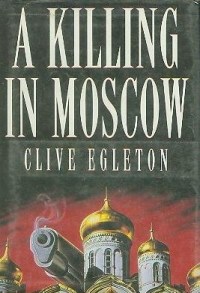Dead Spy Running by Jon Stock
 Saturday, January 1, 2011 at 3:02PM
Saturday, January 1, 2011 at 3:02PM 
Published by Thomas Dunne Books on October 26, 2010; first published in Great Britain in 2009
Dead Spy Running begins with Daniel Marchant running a marathon but the story (unlike the runner) takes off at a sprinter's speed. Suspended from MI6, Marchant has personal issues: he drinks too much and his deceased father, the former Chief of MI6, is suspected of having been a traitor. During the race, Marchant observes one of the runners wearing a belt that conceals explosives -- and the runner happens to be trailing near the American ambassador. Marchant's proximity to the suicide bomber is viewed as no coincidence by the suspicious minds at MI5. Soon the CIA fixates on the notion that Marchant is working for terrorists. Even Marchant's spy girlfriend seems uncertain about Marchant's loyalty. The novel follows Marchant as he battles to clear his father's name and his own.
Much of Dead Spy Running has been done before, often by better writers: the son who wonders whether his father was a traitor, by Len Deighton; the spy with a drinking problem by Graham Greene; the mole in MI6 by John Le Carre and many others. Toward the end, however, the plot takes a twist I haven't seen before, saving the novel from being a rehash of tired stories. Dead Spy Running also has an interesting political component that's not exactly new but well done, as MI6 finds itself at odds with MI5 and the CIA.
The plot is the novel's strong point. The characters are nothing special. The CIA spooks seem a bit over-the-top in their thuggish ways, eagerly carrying out extraordinary renditions so they can conduct interrogations via waterboard. (Of course, there's a reason America's clandestine community is seen that way, but still ....) Stock's writing style is fine but far from stirring. He does have the ability to describe locations (Poland and India) with the kind of detail that adds authenticity to the novel. The pace is perfect for a spy thriller: a fast start, easing a bit as the plot sets up, then full throttle to an action-filled end. Stock doesn't resort to having Marchant perform superhuman feats to save the world, but there's plenty here for action fans.
The ending stretches the limits of credibility but I was willing to accept it because ... well, it was satisfying. I liked this novel and I would recommend it to fans of espionage fiction as a worthwhile blend of intelligent plotting and fast action.
RECOMMENDED



